Physical Address
304 North Cardinal St.
Dorchester Center, MA 02124
Stroke is the leading cause of disability and the third leading cause of death in the United States, with a prevalence of 2.7%. The landscape of acute stroke treatment has changed dramatically in the last 5 years. Since the publication of the Multicenter Randomized Clinical Trial of Endovascular Treatment for Acute Ischemic Stroke in the Netherlands (MR CLEAN) in 2015, numerous randomized controlled trials have proven the efficacy of mechanical thrombectomy for the treatment of acute ischemic stroke (AIS) patients with large-vessel occlusion (LVO). The HERMES collaborators performed a meta-analysis, pooling patient-level data from five of these trials (MR CLEAN, Randomized Assessment of Rapid Endovascular Treatment of Ischemic Stroke [ESCAPE], Randomized Assessment of Rapid Endovascular Treatment of Ischemic Stroke [REVASCAT], Stent-Retriever Thrombectomy After Intravenous t-PA vs. t-PA Alone in Stroke [SWIFT PRIME], and Endovascular Therapy for Ischemic Stroke With Perfusion-Imaging Selection [EXTEND IA]) performed between 2010 and 2014. Looking at data from 1287 patients (of which 634 were assigned to thrombectomy) they showed that endovascular thrombectomy significantly reduced disability at 90 days compared with best medical therapy (adjusted common odds ratio [cOR] 2.49, 95% confidence interval [CI] 1.76–3.53, P < .0001), with a number needed to treat of 2.6 to reduce disability by at least one level on the commonly used modified Rankin scale. These patients had anterior circulation strokes and most patients were treated within 6 hours of symptom onset. The problem of patients with “late” or “delayed” presentation, past 6 hours, was addressed in the Thrombectomy 6 to 24 Hours After Stroke With a Mismatch Between Deficit and Infarct (DAWN) and Thrombectomy for Stroke at 6 to 16 Hours With Selection by Perfusion Imaging (DEFUSE-3) trials. These studies used image-guided selection, as opposed to the traditional time-based selection protocols, to select patients for mechanical thrombectomy. By using image guidance to select patients for treatment, there was reduced disability and increased survival compared with medical therapy with or without the administration of intravenous recombinant tissue plasminogen activator (IV-tPA). We can now therefore confidently say that in carefully selected patients presenting with symptomatic intracranial LVO in the anterior circulation, mechanical thrombectomy represents the standard of care, even if these patients are not eligible for IV-tPA therapy ( Table 62.1 ). It is important to note that the proportion of patients who did receive IV-tPA had better outcomes than their counterparts with were not eligible for IV-tPA administration.
| 4.5 hours from stroke onset Minor or resolving deficits, NIHSS score < 4 Sustained hypertension (systolic BP > 185 mm Hg/diastolic BP > 110 mm Hg) Seizure at onset International normalized ratio > 1.7 Use of novel oral anticoagulants Intravenous heparin with partial thromboplastin time > 40 s or low-molecular-weight heparin in past 48 h Platelet count < 100,000/mm 3 Glucose > 400 mg/dL or < 50 mg/dL Stroke, myocardial infarction, or head trauma in past 3 months Major gastrointestinal or genitourinary hemorrhage in past 3 weeks Major surgery in past 2 weeks Noncompressible arterial puncture in past 7 days Past intracerebral hemorrhage, subarachnoid hemorrhage, or intraventricular hemorrhage CT scan with intracerebral hemorrhage or hypodensity in greater than one-third of middle cerebral artery territory |
Careful patient selection for endovascular acute stroke treatment is paramount to successful clinical outcome. Ideally, at the time of the intervention, the patient should have minimal cerebral infarction, with a large ischemic penumbra that will revitalize once cerebral blood flow is restored. This should ensure maximal clinical benefit and help minimize the principal risk of endovascular AIS therapy, namely hemorrhagic conversion with intracerebral hemorrhage (ICH). Table 61.2 summarizes the indications, based on current practice guidelines published by the American Heart Association (AHA) in 2018. See Figs. 61.1, 61.2, 61.3, 61.4, 61.5 .
|
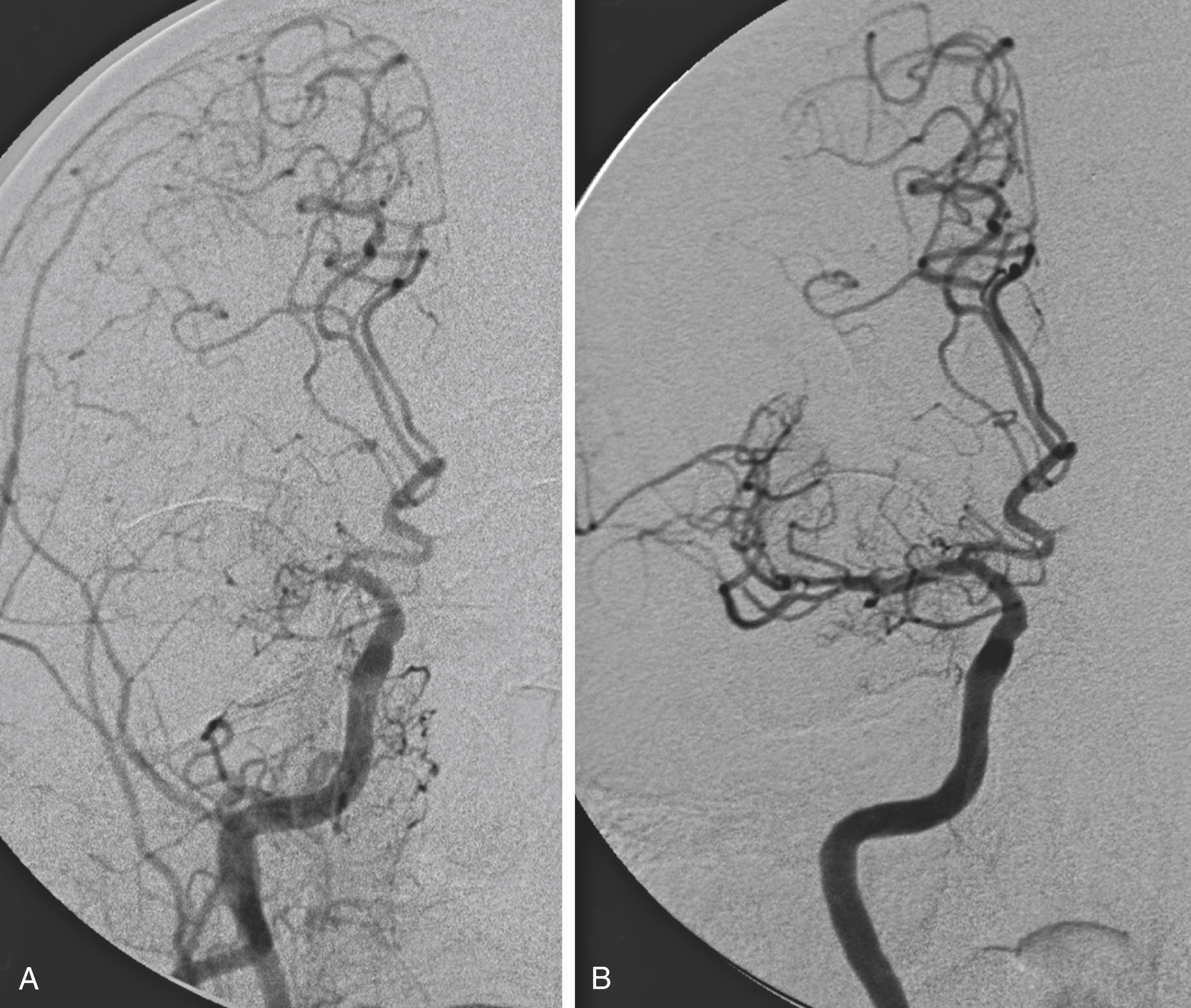
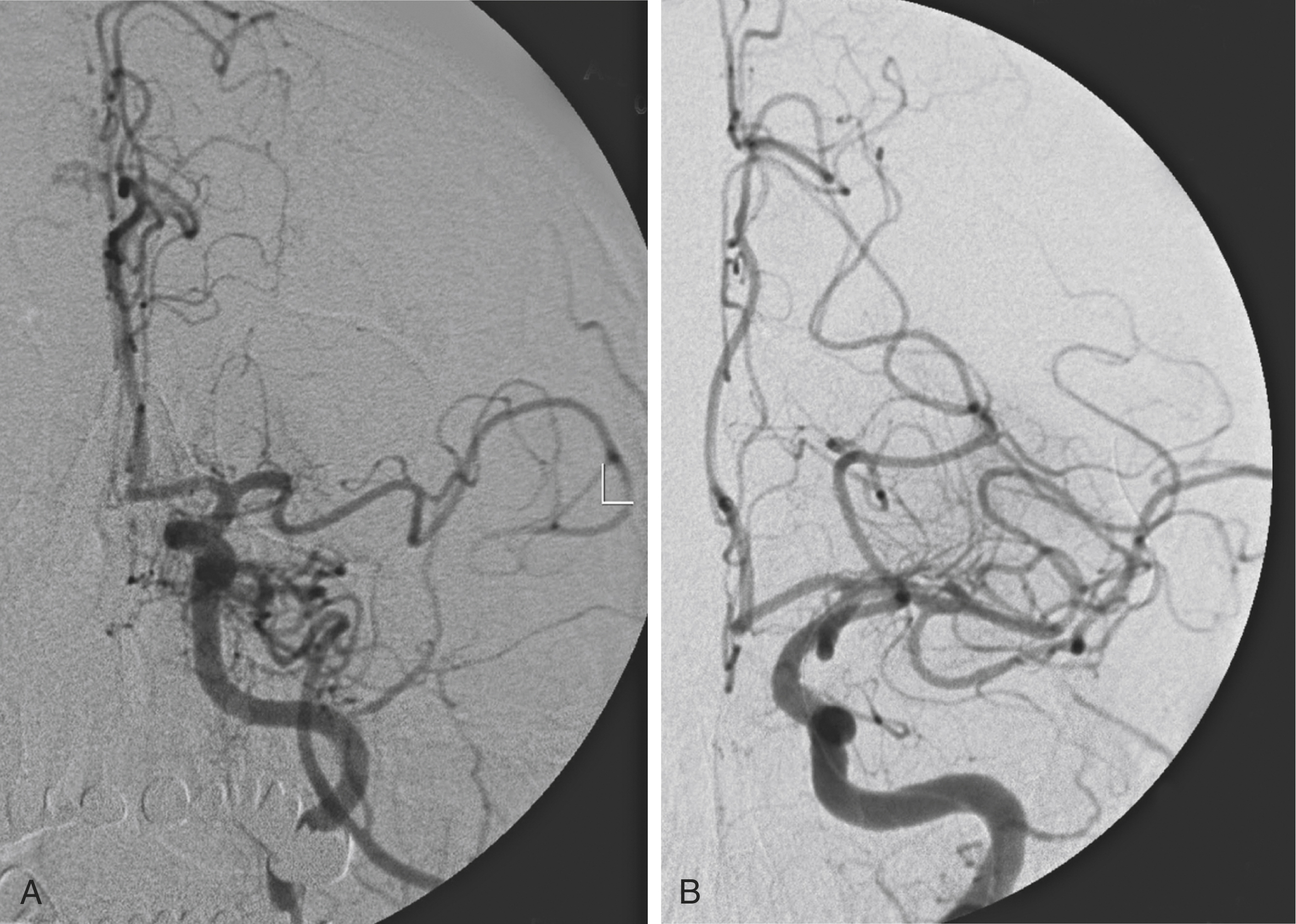
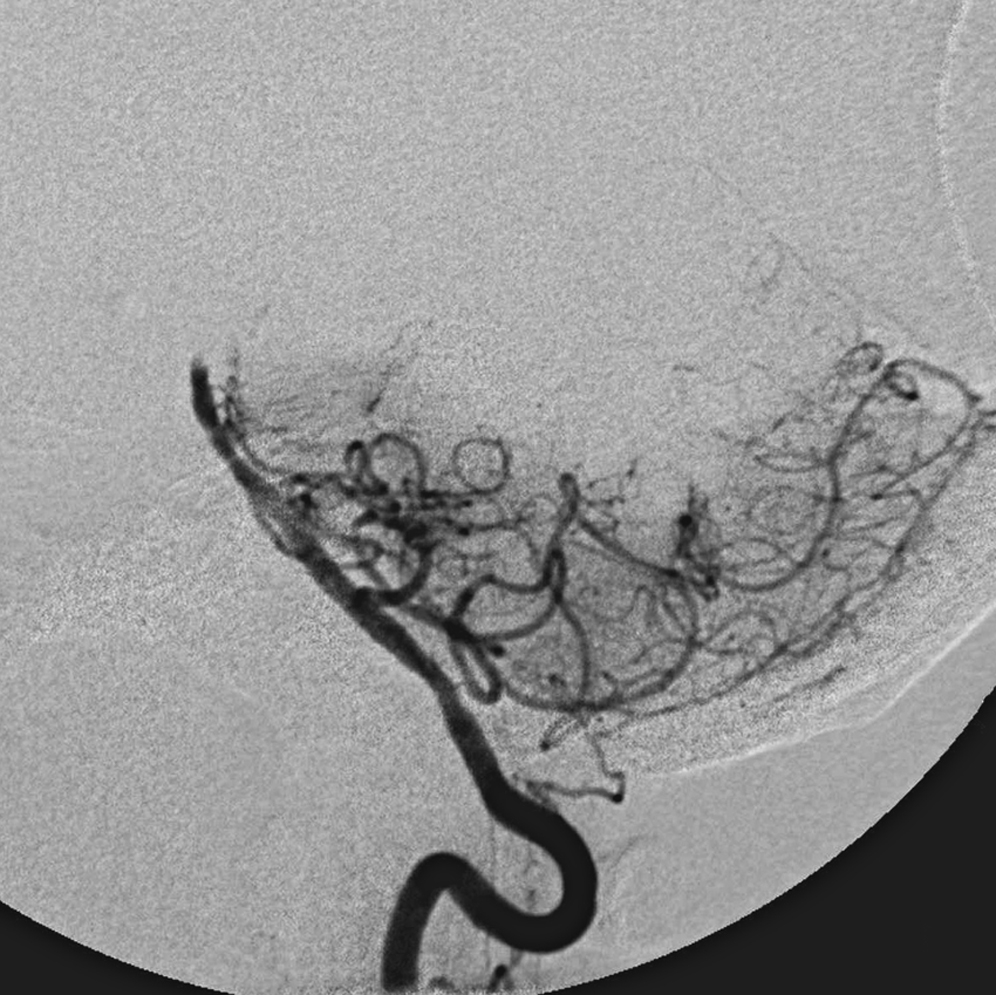

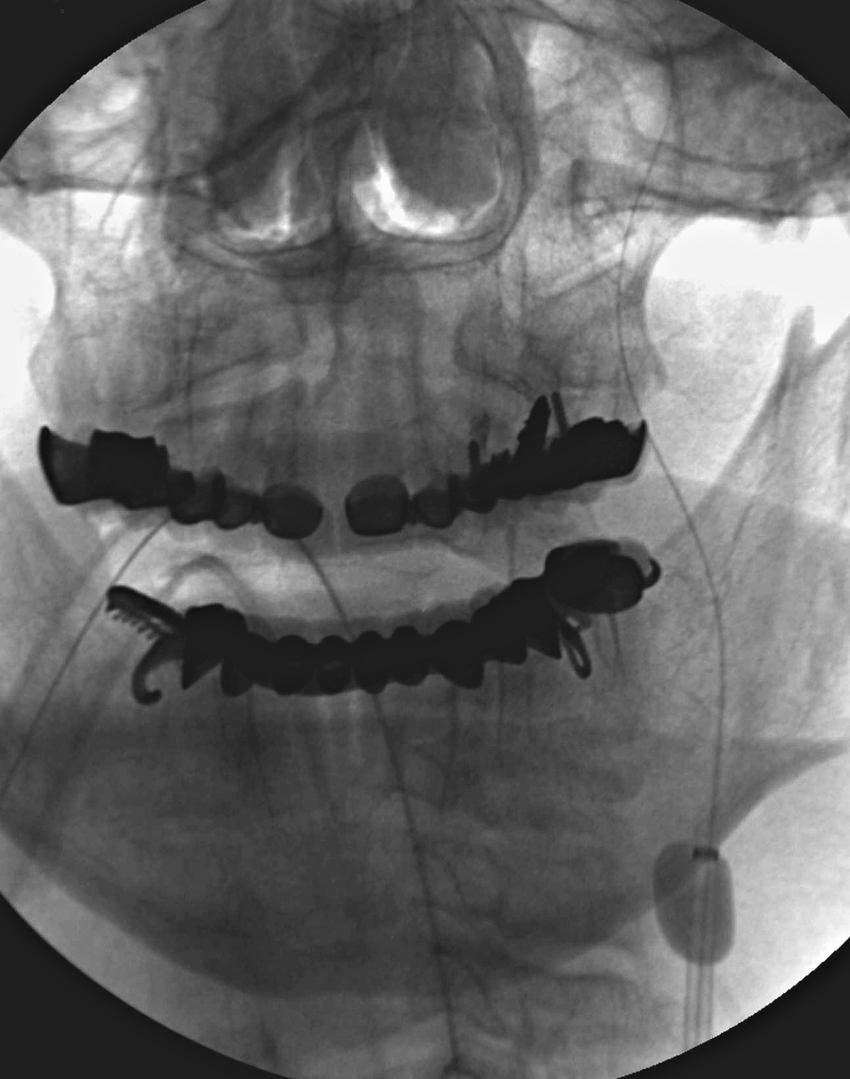
The 2018 AHA/American Stroke Association guidelines recommend endovascular treatment (EVT) if a patient presents less than 6 hours after symptom onset, has a noncontrast head computed tomography (CT) scan showing a small or no area of “core” infarct (Albert Stroke Program Early CT Score (ASPECTS) ≥ 6), with a confirmed intracranial LVO on a CT angiogram. The current guidelines do not recommend perfusion imaging in these patients. The authors’ practice is to perform CT perfusion imaging during the initial imaging evaluation along with the noncontrast head CT and the CT angiogram of the head and neck. Indirect perfusion imaging may also be performed via collateral scoring on single- or multiphase CT angiography. For those patients presenting between 6 and 24 hours, current guidelines recommend the use of either CT perfusion, diffusion-weighted magnetic resonance imaging (MRI) or magnetic resonance (MR) perfusion to aid in patient selection.
All patients require a noncontrast CT of the brain on arrival both to exclude a hemorrhage or other cause for their symptoms and to document the amount of acutely infarcted tissue (if any). The most widely used method of quantifying such tissue damage in the anterior circulation is the ASPECTS, which is a 10-point quantitative score applied to noncontrast CT images of patients with anterior circulation strokes. A “normal” scan has a score of 10, with a point deducted for each area showing signs of infarction. The earlier stroke trials recommended treatment only if the ASPECTS was ≥6, i.e., if there was not a large territory of infarcted brain. Studies are ongoing to determine the benefit of mechanical thrombectomy in patients with ASPECTS < 6. CT angiography is then performed to (1) assess for LVO and (2) assess the amount of collaterals present. Several studies have shown that collateral grade is associated with recanalization, reperfusion, and patient outcomes in patients treated for LVO. Collateral scoring can be used as a factor when selecting patients for treatment. Many centers also use CT/MRI perfusion to assess for the presence of a “penumbra.” This approach was used in recent trials proving the benefit of EVT in carefully selected “late presenters,” i.e., those presenting at >6 hours. It should be noted that not all centers use perfusion imaging for this purpose.
EVT is currently recommended for adult patients if they meet the following criteria: (1) good premorbid status, as measured by the modified Rankin scale (mRS) (i.e., a prestroke mRS score of 0 or 1), (2) occlusion of the internal carotid artery (ICA) or the M1 segment of the middle cerebral artery (MCA), and (3) National Institutes of Health Stroke Scale (NIHSS) score of ≥6. The benefits lessen the more distal the occlusion, and so the guidelines reflect that EVT “may be considered for carefully selected patients” with causative occlusions of the M2/M3 MCA segments. Similarly, the evidence is less strong for other LVO patient cohorts (e.g., mRS score > 1, ASPECTS < 6, NIHSS < 6), and although the guidelines do not preclude EVT in this group they recommend that each case be assessed individually.
Endovascular stroke therapy is contraindicated in patients with ICH and large completed infarction without salvageable territory. Some relative contraindications to intraarterial therapy include rapidly improving neurologic examination, a poor premorbid status with little expectation of clinical improvement, and a history of anaphylaxis to iodinated contrast material. An international normalized ratio > 3.0 is a contraindication (although this can often be acutely corrected with fresh frozen plasma administration), whereas the use of novel oral anticoagulants is not a contraindication to intraarterial treatment.
Digital biplane angiography with road-mapping capability is optimal for the safe and efficient performance of endovascular acute stroke intervention. Whereas some centers routinely use general anesthesia, many others use conscious sedation only, and there is no firm evidence to support one approach or the other. The authors’ practice is to have an anesthesiologist present during the initial evaluation in the Emergency Department and the decision to perform the procedure with sedation or general anesthesia agreed upon before transporting the patient to the angiography suite.
Access via the common femoral artery is the most common approach. An 8F or 9F sheath is placed to provide arterial access. Our practice is to perform femoral access under ultrasound guidance because we have significant experience with this technique and it does not delay the procedure. We place a 9F sheath and pass the line connected to the side arm of the sheath for continuous blood pressure monitoring throughout the procedure. It should be noted that many centers do not use real-time arterial pressure monitoring during the procedure, but no matter what technique is used (conscious sedation, general anesthesia, arterial line monitoring, noninvasive blood pressure monitoring), blood pressure management is of paramount importance. Hypotension must be avoided to maintain penumbral perfusion, and this is an area of continuing research in the literature.
The choice of guiding catheter through which to perform the thrombectomy varies with personal preference and technique. Some authors prefer to perform cerebral thrombectomy through a balloon guide catheter because this allows the arrest of antegrade flow during the retrieval of the clot. Other authors prefer to attempt aspiration thrombectomy initially using a triaxial system consisting of a guiding catheter, aspiration catheter, and ,distal access catheter over which the aspiration catheter is advanced to the face of the clot. This is in part due to the significant cost of the stent retriever devices. Yet another approach is a combined procedure using a guiding catheter without a balloon, advancing the aspiration catheter as distally as possible, and then deploying a stent retriever across the embolus which aspiration through the intermediate catheter while the stent retriever is being withdrawn. There are several excellent references describing and comparing these techniques. , , It should be noted that in general the best approach is the one that the operator is most experienced with. A common femoral sheath is the most common approach, and most centers use an 8F system. A guide catheter is then placed in the appropriate vessel. There is some evidence that the use of balloon guide catheters improves outcomes ( Fig. 61.5 ). Some operators forego separate placement of a femoral sheath and directly advance a guide catheter into the ICA/common carotid artery from the femoral artery.
The sheath and guide catheter are maintained under continuous heparinized saline flush (5000 units of heparin per liter of normal saline). The two main approaches to mechanical thrombectomy involve either the use of a retrievable stent ( Figs. 61.1, 61.2, 61.6, 61.7, and 61.10 ) (e.g., a Solitaire [Medtronic, Minneapolis, MN] or Trevo [Stryker, Kalamazoo, MI], which is known as a stent retriever) and/or the use of an aspiration catheter (e.g., a Penumbra ACE 68 system [Penumbra Inc., Alameda, CA]) ( Figs. 6.3, 6.4, and 6.8 ), which is then connected to a suction pump, in a technique known as direct aspiration. A combination of the two can also be used, a technique referred to as the “Solumbra technique.” Which technique is used largely depends on local experience and availability. Recent trials have shown largely equivocal outcomes between the two. See Figs. 61.6, 61.7, 61.8. 61.9, 61.10 .


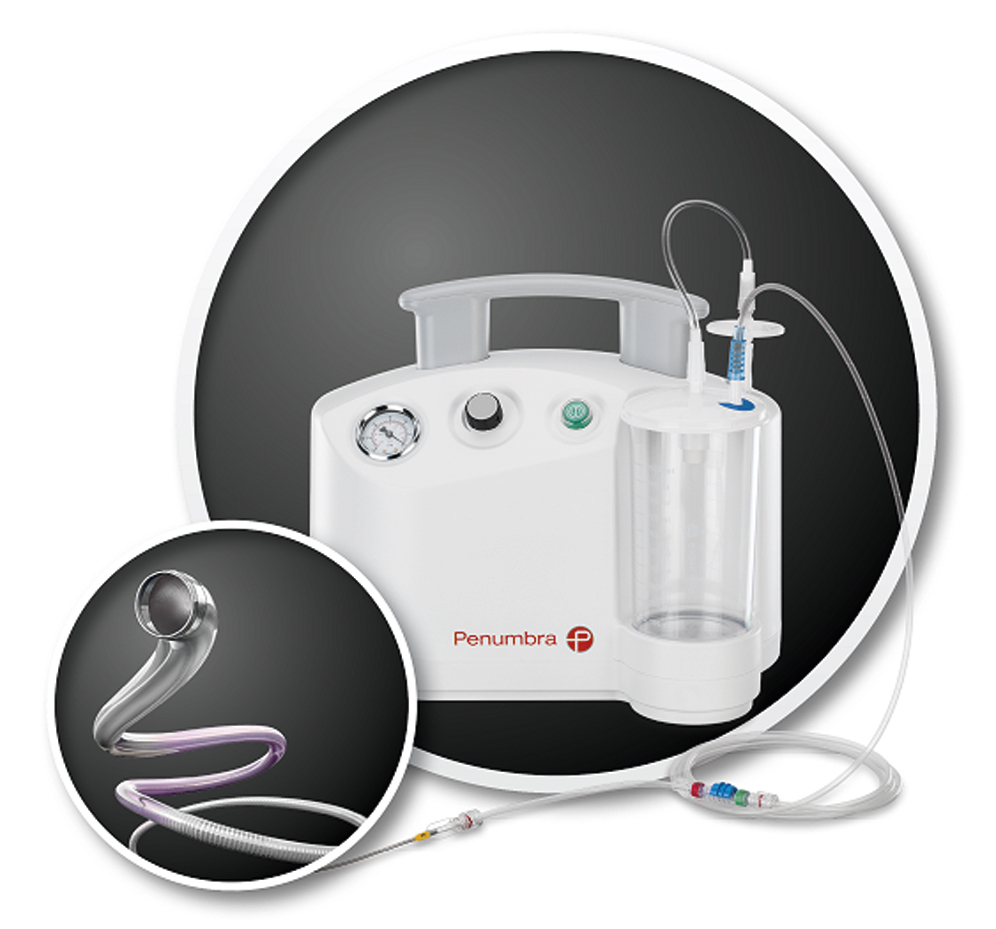
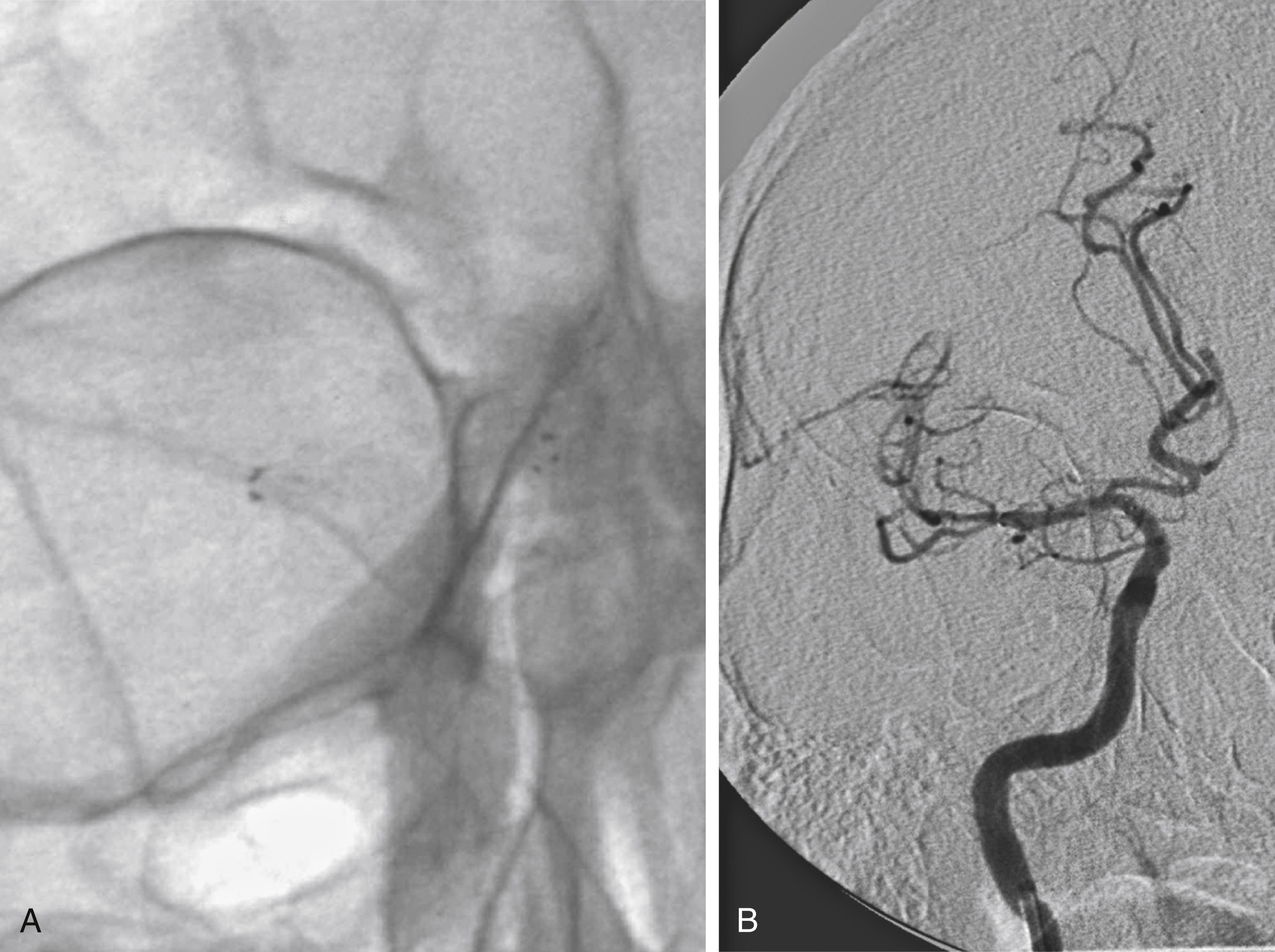
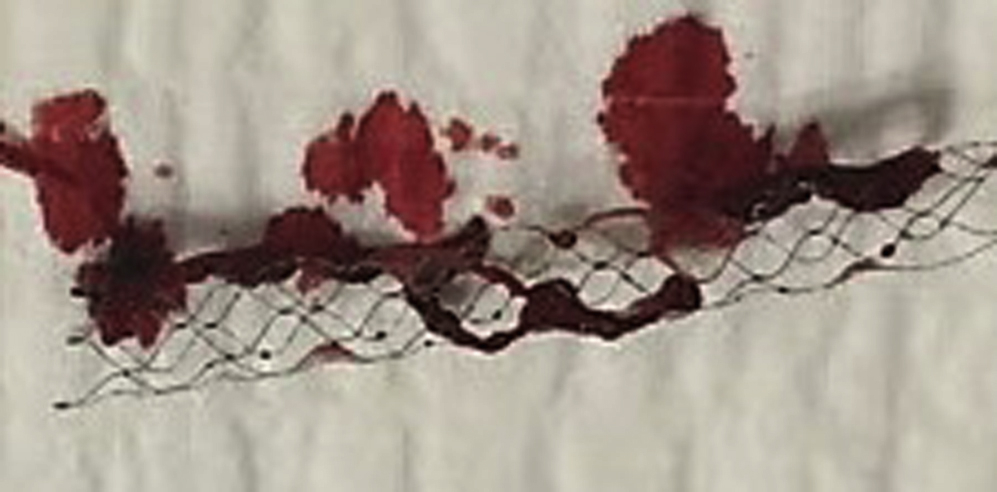
Whichever approach is used, the same broad steps are performed. After placement of the guide catheter, an initial angiogram is performed to document the location of the vessel occlusion. If a stent is being used, a microcatheter and microwire are used to navigate across the thrombus. The stent is then deployed across the thrombus via the microcatheter. If an aspiration catheter is being used it is advanced over the microcatheter to the proximal clot face. More specific details and examples of the basic equipment required for intraarterial treatment are summarized in Table 61.3 . Rarely, severe intracranial atherosclerosis or even dissection will necessitate balloon angioplasty +/- the use of an intracranial stent (see Fig. 61.9 ).
| Device | Example | Manufacturer |
|---|---|---|
| Femoral sheath | 5F–9F, 11–90 cm a | Cordis Corp., Miami Lakes, FL |
| Diagnostic catheter | Berenstein | Cordis |
| Guide catheter a | 8F Neuron Max | Penumbra, Alameda, CA |
| Shuttle Introducer | Cook Inc., Bloomington, IN | |
| FlowGate balloon guide catheter | Stryker, Kalamazoo, MI | |
| Intermediate catheter | Sofia 6F | MicroVention, Irvine, CA |
| Microcatheter | Rebar 18 | Medtronic, Minneapolis, MN |
| Provue 18 | Stryker | |
| Marksman | Medtronic | |
| Microguidewire | Transend-14 | Boston Scientific, Marlboro, MA |
| Synchro-14 | Boston Scientific | |
| Aspiration catheter | ACE-68, 5-MAX, 3-MAX | Penumbra |
| React 68 | Medtronic | |
| Vecta | Stryker | |
| Stent retriever | Trevo | Stryker |
| Solitaire | Medtronic | |
| EmboTrap, EmboTrap II | Neuravi, Galway, Ireland |
a Long 90-cm sheath may be used for support instead of a guide catheter for mechanical embolectomy, intracranial angioplasty, and stenting.
One point to keep in mind is that, if indicated, IV-tPA is still recommended for the treatment of patients with suspected AIS and should be given while the patient is being transferred for EVT. It is also pertinent that this should not delay thrombectomy, and instead can be given during transportation of the patient to the angiography suite.
There are many techniques used by various operators, and it is important to use the technique you are most comfortable with. What follows is an overview of the various approaches, but even with this, there are many nuances (wire and catheter combinations, for example) that various centers apply differently.
Become a Clinical Tree membership for Full access and enjoy Unlimited articles
If you are a member. Log in here